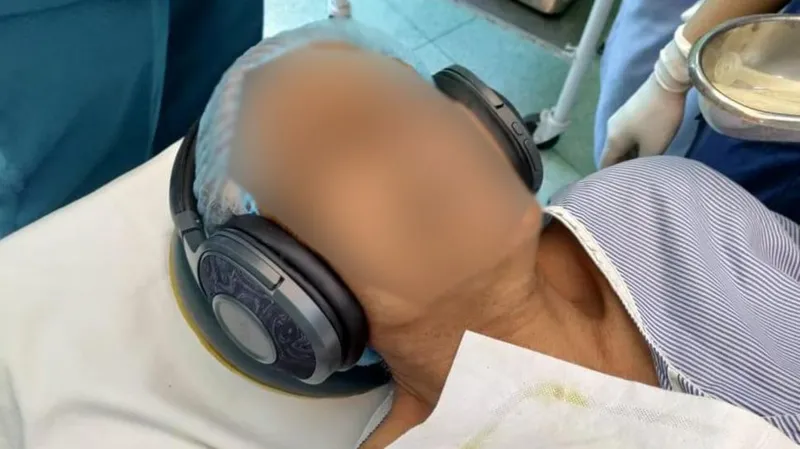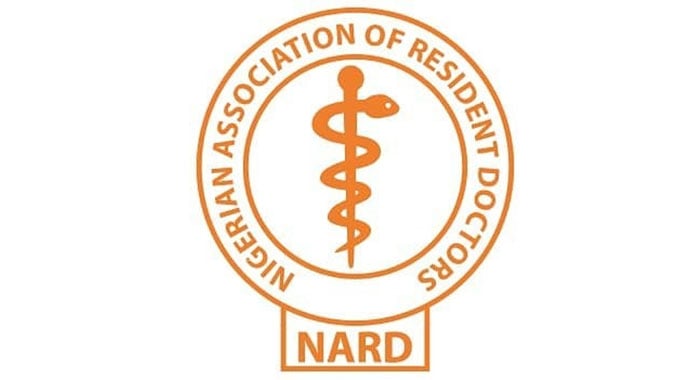Health
NCDC Issues Public Health Advisory On Human Metapneumovirus (HMPV)
There is no specific antiviral treatment or vaccine for HMPV.

The Nigeria Centre for Disease Control and Prevention (NCDC) has issued the following Public Health Advisory on Human Metapneumovirus (HMPV) Awareness, Preparedness, and Prevention.
The document released by, Dr. Jide Idris, the Director – GeneralNigeria Centre for Disease Control and Prevention, said :
” NCDC is committed to safeguarding the health of all Nigerians. In response to recent reports of increased Human Metapneumovirus (HMPV) activity in China and other affected regions, as well as growing public interest in the matter, the NCDC in collaboration with the Federal Ministry of Health and Social Welfare is closely monitoring global developments.
We aim to provide timely, accurate information and guidance to keep the Nigerian public informed and prepared. Global situation update.
It is important to note that the rumor circulating about the World Health Organization (WHO) declaring HMPV a Public Health Emergency of International Concern (PHEIC) is false and should be disregarded.
The WHO has not made such a declaration. Recent reports indicate a significant rise in Human Metapneumovirus (HMPV) cases in China, as well as increased respiratory infections linked to HMPV in countries such as the United Kingdom (UK), France, and Germany, particularly during the winter season.
The UK Health Security Agency (UKHSA) has highlighted a notable rise in hospital admissions due to HMPV-related complications, especially among children under five and older adults in care homes.
This trend emphasizes the need for heightened preparedness and vigilance.
Current Situation in Nigeria
Nigeria operates a National Influenza Sentinel Surveillance (NISS) system, comprising sentinel sites distributed across the six geopolitical zones of the country.
These sites, which include tertiary and secondary health facilities, monitor Influenza-like Illness (ILI) and Severe Acute Respiratory Infections (SARI).
As of January 6, 2025, data from this surveillance system does not indicate any unusual increase in respiratory infections, including those caused by Human Metapneumovirus (HMPV).
However, given the global trends in HMPV cases, the Nigeria Centre for Disease Control and Prevention (NCDC) is proactively implementing measures to strengthen the country’s preparedness and response capacity.
NCDC Preparedness Measures
The NCDC is closely monitoring the situation and has implemented the following actions to ensure public health safety:
1. Dynamic Risk Assessment
On January 6, 2025, the Nigeria Centre for Disease Control and Prevention (NCDC), in collaboration with the Federal Ministry of Health and partners such as the World Health Organization (WHO), the U.S. Centers for Disease Control and Prevention (USCDC), and the UK Health Security Agency (UKHSA), conducted a dynamic risk assessment for Human Metapneumovirus (HMPV).
The assessment classified the risk of HMPV for Nigeria as moderate.
This evaluation will inform and guide preparedness efforts, decision-making, and response strategies to mitigate potential impacts.
2. Public Health Advisory:
Issued this advisory to provide Nigerians with up-to-date information on preparedness actions and preventive measures.
3. Point of Entry (POE):
The Nigeria Centre for Disease Control and Prevention (NCDC), in collaboration with Port Health Authorities, is taking proactive steps to ensure robust preparedness at all international points of entry (PoEs) in response to the dynamic risk assessment for Human Metapneumovirus (HMPV).
These measures are designed to mitigate the potential risk of HMPV transmission through international travel. Key actions include
▪︎ Conducting a comprehensive situation analysis at all international PoEs to assess current readiness levels.
▪︎ An Entry Implementation Protocol on HMPV, approved by the Honourable Minister of Health and Social Welfare, is being developed and will be distributed to all points of entry to guide response activities.
▪︎ In addition, quarantine facilities are being identified and prepared to manage any suspected or confirmed cases if required.
▪︎ Infection Prevention and Control (IPC) materials are being deployed to PoEs to ensure adherence to hygiene and safety protocols.
▪︎ Information, Education, and Communication (IEC) materials are being developed and distributed to raise awareness and provide clear guidelines for frontline staff and travelers at PoEs.
4. Enhanced Surveillance and Laboratory Diagnosis:
The National Influenza Sentinel Surveillance (NISS) sites across the six geopolitical zones monitor Influenza-like Illness (ILI) and Severe Acute Respiratory Infections (SARI).
This platform, which is already testing for COVID-19, will now also start testing for HMPV. Provisions will be made to increase the number of tests conducted.
Additionally, laboratories in states with international airports will be supported to enable them to test for HMPV.
5. Infection Prevention and Control (IPC):
Advisories have been issued to hospitals nationwide on enhanced IPC practices, including proper hand hygiene, environmental cleaning, respiratory hygiene, and cough etiquette.
All health facilities are required to identify an appropriate isolation room where cases can be quickly isolated while receiving care.
6. Case Management Preparedness:
Collaborating with state governments and healthcare facilities to provide training for healthcare workers to ensure adequate case management teams are in place and ready to respond if needed.
This will ensure that healthcare workers are able to provide appropriate care and maintain a high index of suspicion. Supportive care and an emphasis on a high index of suspicion are crucial.
We are requesting state governments to activate their treatment centers or isolation centers to ensure they are prepared to manage cases appropriately.
7. Stockpiling of Medical Countermeasures:
Relevant materials such as PPEs (face masks, hand gloves, hand hygiene supplies, and other essential IPC items) have been stockpiled for rapid deployment if required.
Additionally, laboratory consumables, reagents, and other necessary supplies have also been stockpiled to ensure readiness.
Risk Communication and Community Engagement:Engaging with the public through clear and accurate messages to address concerns, dispel misinformation, and encourage appropriate health-seeking behaviors.
We work in close collaboration with state risk communication and community engagement pillars, health educators, and other trusted voices, such as the media.
These efforts reflect NCDC’s commitment to proactive coordination and response at all levels of public health.
Public Advisory What is HMPV?
Human Metapneumovirus (HMPV) is a respiratory virus that can cause illnesses ranging from mild cold-like symptoms to severe respiratory infections, particularly in:
• Young children •
Older adults
• Individuals with weakened immune systems
There is no specific antiviral treatment or vaccine for HMPV.
Supportive care, such as rest, hydration, and fever management, remains the primary approach to recovery.
Symptoms
• Cough
• Fever
• Nasal congestion
• Shortness of breath
• Wheezing
• Bronchitis or pneumonia (in vulnerable populations such as very young children, older people, patients with low immunity such and those on cancer treatment, uncontrolled diabetes etc).
The incubation period is 3-5 days after exposure, and infections typically resolve within 2-5 days with supportive care.
We urge the public to adhere to the preventive measures outlined above and to seek medical attention if experiencing symptoms consistent with HMPV infection.
However, high-risk populations may experience complications.
Transmission HMPV spreads through:
• Respiratory droplets from coughing and sneezing
• Close personal contact (e.g., touching or shaking hands)
• Touching contaminated surfaces and then touching the face.
Overcrowding and poor ventilation can lead to increased transmission, e.g., in congregate settings such as correctional centers and poorly managed IDPs.
Preventive Measures
To reduce the risk of HMPV infection, the public is advised to follow these preventive steps:
For the General Public:
• Hand Hygiene: Wash hands frequently with soap and water for at least 20 seconds.
• Respiratory Etiquette: Cover your mouth and nose with a tissue or elbow when coughing or sneezing. Cover your mouth an nose with face mask if you are experiencing flu like symptoms.
• Avoid Close Contact: Maintain distance from individuals showing symptoms of respiratory illness.
• Avoid overcrowded places.
• Disinfect Surfaces: Regularly clean and disinfect frequently touched objects and surfaces.
• Self-Isolation: Stay home if experiencing symptoms to prevent spreading the virus. As is correct parctice and seek medical care from appropriate sources.
Protecting Vulnerable Groups:
• Young children, older adults, and individuals with underlying health conditions such as people with chronic diseases such as diabetes, on cancer treatment, immunicompromised paients or those with low immunity should seek prompt medical attention if experiencing severe symptoms. Healthcare Guidance
For Healthcare Workers:
• Reinforce Infection Prevention and Control (IPC) measures in healthcare facilities.
• Enhance surveillance for acute respiratory infections and report unusual increases to the relevant authorities. Index of suspiciona nd enhanced
• Use appropriate PPE when attending to patients with respiratory symptoms.
• Educate patients on preventive measures and when to seek emergency medical care.
• Provide symptomatic care and promptly refer severe cases to specialist facilities.
Conclusion
The NCDC remains dedicated to protecting the health of Nigerians through continuous surveillance and prompt response to infectious diseases.
We urge the public to adhere to the preventive measures outlined above and to seek medical attention if experiencing symptoms consistent with HMPV infection.
We also emphasize the importance of relying on verified information from the NCDC and WHO.
For emergencies, please contact the NCDC’s toll-free line at 6232 or email us at info@ncdc.gov.ng.
Follow us on our verified social media platforms for timely updates.
Together, we can protect our communities from respiratory infections and ensure a healthier Nigeria.
Contact Information • Toll-Free Number: 6232 • SMS: *** • WhatsApp: *** • Twitter: @NCDCGov • Facebook: @NCDCgov • Instagram: @NCDCgov
Health
WHO Names Nigeria’s Professor Martins Emeje Co-Chair of Traditional Medicine Advisory Group
The appointment of Professor Emeje reflects the WHO’s commitment to inclusive, balanced, and scientifically rigorous leadership in advancing traditional, complementary, and integrative medicine worldwide.

As the Director-General of NNMDA, Professor Emeje has played a pivotal role in promoting research, development, regulation, and commercialization of natural medicines in Nigeria.
The World Health Organisation (WHO) has named Professor Martins Emeje, Director-General of the Nigeria Natural Medicine Development Agency (NNMDA, as Co-Chair of its newly established Strategic and Technical Advisory Group on Traditional, Complementary and Integrative Medicine (STAG-TM).
Professor Emeje was appointed alongside Dr Susan Wieland, Director at Cochrane Complementary Medicine, following the formal unveiling of the Strategic and Technical Advisory Group.
The establishment of STAG-TM marks a significant milestone in the implementation of the WHO Traditional Medicine Strategy, aimed at strengthening global health systems through evidence-based traditional and integrative medicine.
The appointment of Professor Emeje reflects the WHO’s commitment to inclusive, balanced, and scientifically rigorous leadership in advancing traditional, complementary, and integrative medicine worldwide.
Both Co-Chairs bring extensive expertise in research, innovation, and policy development, particularly in natural products and evidence-based medicine.
As the Director-General of NNMDA, Professor Emeje has played a pivotal role in promoting research, development, regulation, and commercialization of natural medicines in Nigeria.
His selection highlights Nigeria’s growing contribution to global health governance and innovation in traditional medicine.
The Strategic and Technical Advisory Group on Traditional, Complementary and Integrative Medicine will provide expert guidance to the WHO on policy frameworks, research priorities, and best practices to ensure the safe, effective, and quality integration of traditional medicine into national healthcare systems.
The W.H.O while announcing the creation of the 19 member Group emphasized that the move is part of its global Traditional Medicine Strategy 2025 describing it as a decisive step in applying a scientific response to traditional medicine.
At the inaugural meeting of the Group, held alongside the second W. H.O Global Traditional Medicine Summit held in New Delhi, India, the W.H.O’s Assistant Director General for Health System,Access and Data, Dr Yukiko Nakatani says it is a pivotal moment for Traditional Medicine as it embodies cultural heritage, national health identities and a vital component of policy healthcare strategies.
The situation whereby the rapid growth of traditional medicine has not been matched by strong evidence, standards, regulatory frameworks or sustainable governance, W.H.O’s Chief Scientist , Dr Sylvie Briand emphasized, underscores the urgency of the initiative.
Health
Music eases surgery and speeds recovery, Indian study finds
To understand why the researchers turned to music, it helps to decode the modern practice of anaesthesia.

• A patient with headphones playing music during surgery in a hospital in Delhi.
Under the harsh lights of an operating theatre in the Indian capital, Delhi, a woman lies motionless as surgeons prepare to remove her gallbladder.
She is under general anaesthesia: unconscious, insensate and rendered completely still by a blend of drugs that induce deep sleep, block memory, blunt pain and temporarily paralyse her muscles.
Yet, amid the hum of monitors and the steady rhythm of the surgical team, a gentle stream of flute music plays through the headphones placed over her ears.
Even as the drugs silence much of her brain, its auditory pathway remains partly active.
When she wakes up, she will regain consciousness more quickly and clearly because she required lower doses of anaesthetic drugs such as propofol and opioid painkillers than patients who heard no music.
That, at least, is what a new peer-reviewed study from Delhi’s Maulana Azad Medical College and Lok Nayak Hospital suggests.
The research, published in the journal Music and Medicine, offers some of the strongest evidence yet that music played during general anaesthesia can modestly but meaningfully reduce drug requirements and improve recovery.
The study focuses on patients undergoing laparoscopic cholecystectomy, the standard keyhole operation to remove the gallbladder.
The procedure is short – usually under an hour – and demands a particularly swift, “clear-headed” recovery.
To understand why the researchers turned to music, it helps to decode the modern practice of anaesthesia.
“Our aim is early discharge after surgery,” says Dr Farah Husain, senior specialist in anaesthesia and certified music therapist for the study.
“Patients need to wake up clear-headed, alert and oriented, and ideally pain-free. With better pain management, the stress response is curtailed.”
Achieving that requires a carefully balanced mix of five or six drugs that together keep the patient asleep, block pain, prevent memory of the surgery and relax the muscles…
(From BBC)
Health
Doctors’ strike continues as NARD demands fair deal, better pay

The Nigerian Association of Resident Doctors (NARD) has urged the Federal Government to immediately conclude the long-delayed Collective Bargaining Agreement (CBA) as the union’s indefinite strike entered its 15th day on Saturday.
The doctors are also demanding a review of the Consolidated Medical Salary Structure (CONMESS), which they described as outdated and inadequate in the face of rising living costs.
In a statement posted on X on Saturday, NARD said doctors have waited too long for a fair and clearly defined agreement on their work conditions and remuneration.
“For long we’ve waited for a Collective Bargaining Agreement (CBA), a simple, written promise that ensures fairness, clear work terms, and proper pay. But the government keeps delaying, while doctors face rising costs and crumbling morale,” the union said.
“We demand the immediate conclusion of the CBA and review of the outdated CONMESS salary structure.”
The ongoing industrial action, which began earlier this month, has disrupted services in 91 hospitals across the country, including federal teaching hospitals, specialist centres, and federal medical centres.
NARD reiterated that its 19-point demand list is vital for improving the welfare of doctors and safeguarding the health sector. Among the demands are the payment of arrears under CONMESS, the disbursement of the 2025 Medical Residency Training Fund, prompt payment of specialist allowances, improved recognition of postgraduate qualifications, and better working conditions.
The union said these measures are essential to keep medical professionals in the system and maintain a functional healthcare delivery structure.
President Bola Tinubu had earlier directed the Ministry of Health to ensure immediate resolution of the strike, assuring that the government is working to address the doctors’ concerns.
However, NARD said the continued delay in signing the CBA and reviewing salaries has further dampened morale among resident doctors, many of whom are battling with economic hardship while providing critical healthcare services.
The union maintained that it remains open to dialogue but expects urgent government action to restore normalcy in the nation’s hospitals.
-

 Opinions2 days ago
Opinions2 days agoNigeria’s Democracy Under Siege: Opposition Faces Existential Threats
-

 Sports18 hours ago
Sports18 hours agoFenerbahçe wants to buy Ademola Lookman from Atlanta for €42m
-

 News3 days ago
News3 days ago2026 WAEC, NECO: FG introduces new measures to eliminate malpractices See the measures
-

 News2 days ago
News2 days agoNBA declares “Odogwu Lawyer” missing
-

 International3 days ago
International3 days agoColombia and Mexico hit back at the U.S over Venezuela’s Maduro overthrow
-

 News1 day ago
News1 day ago141 million Nigerian households to live in poverty this year – Report
-

 Health19 hours ago
Health19 hours agoWHO Names Nigeria’s Professor Martins Emeje Co-Chair of Traditional Medicine Advisory Group
-

 Politics19 hours ago
Politics19 hours ago2027: LP’s Baba-Ahmed declares presidential ambition








